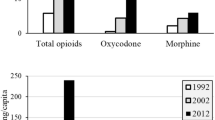Summary.
The aim of this manuscript is to introduce Cryptotis parva (the least shrew) as a new experimental emesis model. The chemotherapeutic agent, cisplatin, caused a dose-dependent increase in the number of animals exhibiting vomiting and retching behaviours with ED50 values of 6.43 ± 1 and 7.9 ± 1.2 mg/kg, respectively. The frequencies of these parameters were also dose-dependent. Intraperitoneal administration of 5-HT3 receptor antagonists (tropisetron or MDL 72222) prevented cisplatin-induced emesis and retching behaviours in the least shrew by a dose-dependent mechanism with respective ID50 values of 4.28 ± 2.8 and 2.05 ± 2 for emesis, and 2.71 ± 4.5 and 2.52 ± 2.59 for retching. Intraperitoneal injection of selective and nonselective 5-HT3 receptor agonists potently, and in a dose-dependent fashion, induced emesis in the least shrew with the following ED50 potency order: 2-methyl 5-HT ≈ 5-HT (p > 0.05) <5-HTQ (p < 0.01) <mCPBG (p < 0.001). As with other established experimental animal emesis models, the present data indicate that cisplatin causes emesis by activating 5-HT3 receptors indirectly via release of 5-HT.
Similar content being viewed by others
Author information
Authors and Affiliations
Additional information
Received March 2, 1998; accepted May 7, 1998
Rights and permissions
About this article
Cite this article
Darmani, N. Serotonin 5-HT3 receptor antagonists prevent cisplatin-induced emesis in Cryptotis parva: a new experimental model of emesis. J Neural Transm 105, 1143–1154 (1998). https://doi.org/10.1007/s007020050118
Issue Date:
DOI: https://doi.org/10.1007/s007020050118




